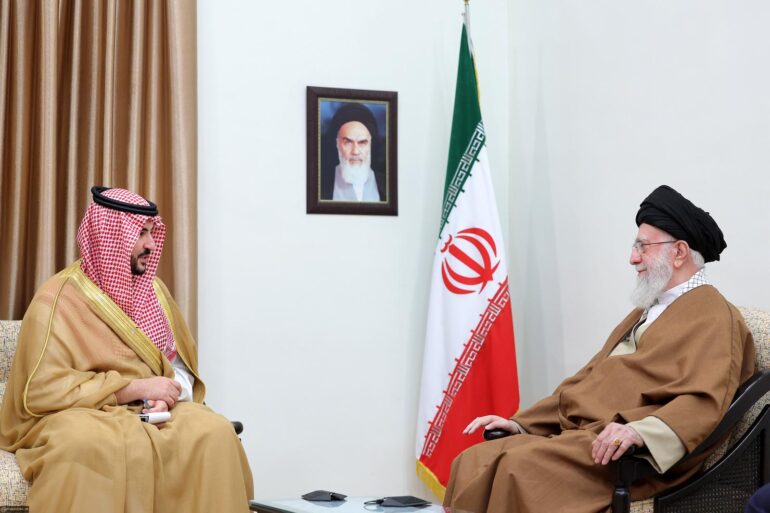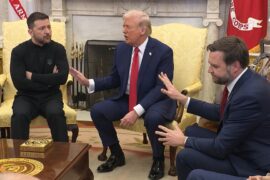In June 1971, Saudi King Faisal visited Egyptian President Anwar al-Sadat, a meeting that effectively ended two decades of cold war between the Arab states.
United against the ascendant Israel and its recent stunning victory in the Six Day War, Faisal and Sadat created in Cairo a unified Arab front that would serve for the foundation for the 1973 Yom Kippur War, the greatest challenge to Israel’s survival since its inception.
Last month, Saudi Defense Minister Prince Khalid bin Salman made a similar visit to Tehran, the highest-level Saudi royal visit to Iran since 1979.
Khaled met with the leaders of the Islamic Republic, conveying a message of support from his brother Crown Prince Mohammed bin Salman for a Saudi-Iran defense pact and a US-Saudi Iran Deal.
Much like Faisal’s 1971 visit to Cairo marked the end of Saudi-Egyptians tensions and the beginning of a united Arab front against Israel, it is possible Khaled’s visit to Tehran last month’s could mark the end of the decades-long Sunni-Shia tensions between Saudi Arabia and Iran, and create a united Islamic front against Israel.
There is good reason to assume that this ultimately being organized by US President Donald Trump‘s administration, which is seeking to rehabilitate Iran (and bolster Turkey) as a counterbalance to Israel. The prevention of Israel, or any nation, from achieving regional hegemony is Washington’s chief foreign policy interest.
John Mearsheimer explains this in The Tragedy of Great Power Politics (2001).
“States that achieve regional hegemony seek to prevent great powers in other regions from duplicating their feat. Regional hegemons, in other words, do not want peers. Thus the United States, for example, prevented Wilhimine Germany, Nazi Germany, and the Soviet Union from gaining regional supremacy. Regional hegemons attempt to check aspiring regional hegemons in other regions because they fear that a rival great power that dominates its own region will be an especially powerful foe that it is essentially free to cause trouble in the fearful great power’s backyard. Regional hegemons prefer there to be at least two great powers located together in other regions, because their proximity will force them to concentrate their attention on each other rather than on the distant hegemon.” (Mearsheimer, 22)
The United States exists as a global hegemon insofar that it is the only regional hegemon in the world. The rise of a peer competitor, another regional hegemon in any part of the world, is a direct threat to Washington’s global standing. Preventing the rise of any regional hegemon anywhere in the world is the primary driving force behind US foreign policy.
Israel’s current war has taken the Jewish state from near destruction to a dangerous flirtation with regional hegemony, which poses a direct challenge to US global power.
The Trump administration is currently trying to salvage and co-opt the Iran Axis, facilitate Turkish expansionism, construct a nuclear Saudi Arabia, and organize agreements between the three projects through mutual recognition and defense pacts.
A united front between three of the four major West Asian powers – Saudi Arabia, Iran, and Turkey – is being constructed by Washington to counterbalance Israel.
It’s unclear if Prime Minister Binyanin Netanyahu (Likud) fully recognizes Trump’s hand behind these efforts and the threats they pose to Israel. But the most effective way to thwart these plans would be to establish strong ties in the region independent of Washington in order to work towards an independent Semitic region that is militarily and economically free from US imperialism.





